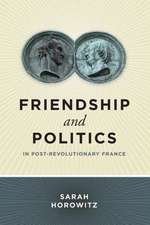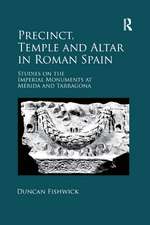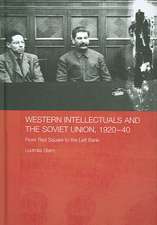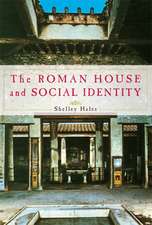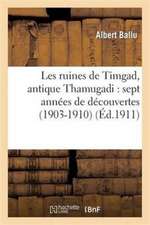Roman Building: Materials and Techniques
Autor Jean-Pierre Adamen Limba Engleză Paperback – 22 apr 1999
Preț: 560.76 lei
Preț vechi: 862.64 lei
-35% Nou
107.30€ • 112.31$ • 89.31£
Carte tipărită la comandă
Livrare economică 31 martie-14 aprilie
Specificații
ISBN-10: 0415208661
Pagini: 360
Dimensiuni: 210 x 297 x 20 mm
Greutate: 0.91 kg
Ediția:1
Editura: Taylor & Francis
Colecția Routledge
Locul publicării:Oxford, United Kingdom
Public țintă
General, Postgraduate, and UndergraduateNotă biografică
Cuprins
Recenzii
'This is a truly massive and magnificent book, much revised and enlarged since the first edition in 1989.' - Minerva
'This superb monograph with its excellent photographs and diagrams ... is by far the best account of the subject available.' - British Archaeological News
'Recommended to classical scholars as a rich source of information on material culture, and a model of visual presentation.' - Kevin Greene, L'Antiquite Classique
Textul de pe ultima copertă
Now in paperback, Roman Buildings is a thorough and systematic examination of Roman architecture and building practice, with over 750 illustrations . It looks at large- scale public buildings as well as more modest homes and shops. Placing emphasis on the technical aspects of the subject, it follows the process of building through each stage -- from quarry to standing wall, from tree to roof timbers -- and how these materials were obtained or manufactured. The author also discusses interior decoration and looks at the practical aspects of water supply, heating and roads.
Descriere
Roman architecture is extraordinarily rich, both in terms of the techniques and materials used and in the variety of buildings constructed, many of which are still visible today. This text places emphasis on the technical aspects of that architecture, following the process of building through each stage, from quarry to standing wall, from tree to roof timbers. The author examines the different techniques involved in building in brick and in stone and wood, and how these materials were obtained or manufactured. He also discusses interior decoration and looks at the practical aspects of water supply, heating and roads. Each type of building required special tools and these are described, using both surviving examples and modern parallels. The Romans constructed many spectacular feats of engineering, producing magnificent monuments such as the Pantheon and Pont du Gard. This book looks at these large-scale public buildings but also at more modest homes and shops. The result is a systematic examination of Roman Building, with over 750 illustrations, including the author's own drawings.

